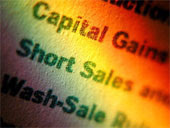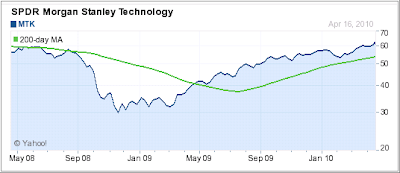 The NYT is discussing the various benefits of ETFs in “The Low-Cost Power of Exchange Traded Funds.” One section caught my attention, which I like to hone in on and that’s the tax advantages of ETFs over mutual funds:
The NYT is discussing the various benefits of ETFs in “The Low-Cost Power of Exchange Traded Funds.” One section caught my attention, which I like to hone in on and that’s the tax advantages of ETFs over mutual funds:
There is another cost advantage to E.T.F.’s that leads analysts to predict continuing expansion: taxation is less severe.
“E.T.F.’s are substantially more tax-efficient” than mutual funds, said Harold R. Evensky, president of Evensky & Katz, a financial planning firm. That is especially true when the portfolio follows indexes dominated by large companies like those of the Standard & Poor’s 500 or the Russell 3000.
The reason is arcane and comes down to differences in the way E.T.F.’s and mutual funds create or eliminate shares to meet investor demand. A rule generally allows E.T.F.’s to do so without triggering taxable transactions.
“If you’re invested in an S.& P. or Russell 3000 E.T.F., there is no tax consequence until you sell,” Mr. Evensky said. In an equivalent mutual fund, he added, “you may have tax consequences if you just sit there and hold it and haven’t done anything.”
“An E.T.F. is almost like having money in a retirement account.”
Of course, keep in mind that if an ETF pays any kind of dividend, that will be subject to taxation in a taxable account.
What the above article references are the year-end distributions (capital gains and a losses) that mutual fund companies are required to pass on to the investors whether the fund has made money or not. That’s where ETFs have a huge advantage in being able to avoid this issue.
If the tax aspects of investing via a taxable brokerage account are important to you, ETFs definitely have the edge over mutual funds.






